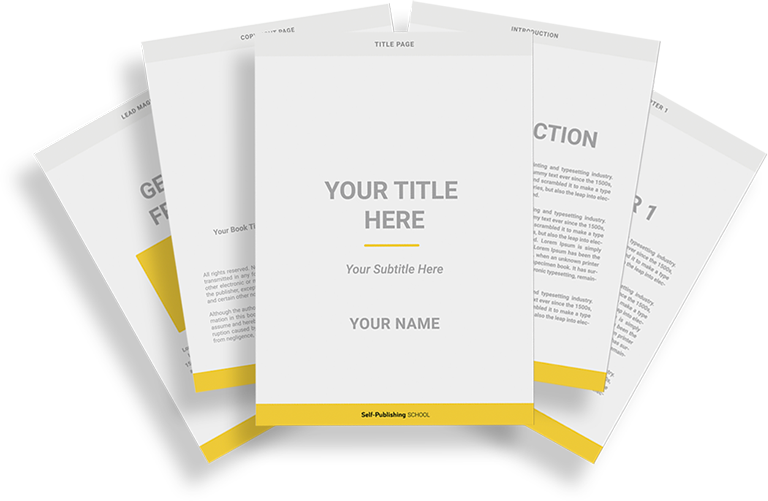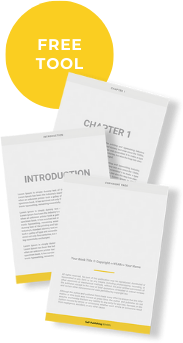Are you having a tough time writing a fantasy novel?
Maybe you get stuck in the world building stage too long and never actually make it to the drafting process. Maybe you skip the world building stage altogether and find yourself stranded in the middle of a story with not even a map to help you out.
Hey, not judging. It happens to the best of us!
There’s no need to despair: we’ve got a set of tools that will help you streamline your worldbuilding process to make sure you’re prepared, organized, and most importantly, set up to finish your book with ease.
Genre: Fantasy or Sci-Fi World building?
First things first: we need to know what kind of a world we’re building.
The advice in this article will be applicable for fantasy or sci-fi genres, but I wanted to touch on the two major types of genres you’ll be working with when you’re world building and explain why the difference matters.

Fantasy World building
Fantasy and sci-fi are technically the same genre, both slotted under ‘speculative fiction.’ When I talk about ‘fantasy’ worlds, I’m talking about high fantasy. Think Lord of the Rings, Game of Thrones, The Poppy War, et cetera.
High fantasy worlds tend to have a focus on the magical. They also tend to take place in a setting that we would think of as inspired by the past—-if you’re looking for a more futuristic feel, sci-fi might be more your speed. There isn’t much focus on science or tech, and it’s mostly alright for magic and mythical creatures to roam around without much real-world explanation.
Fantasy worlds should still have their own internal logic (sci-fi or fantasy), but high fantasy will be less interested in the tech behind the magic.
Sci-Fi World building
Sci-fi worldbuilding can be distinguished by its focus on science. When you’re working on your sci-fi story, whether it’s a space opera, a dying Earth piece, or a dystopian novel, you’ll want to focus on science.
This doesn’t mean everything needs to make perfect scientific sense, unless you’re writing hard sci-fi. But it means that in general, you’ll be more focused on technology, science, and speculation about real-world problems.
Use a Template
Whether you’re writing a sci-fi novel or a high fantasy novel, you’ll still need to, well, do some worldbuilding. So where do you start?
A template can be super useful for getting all of your thoughts organized and externalized. You don’t want to dump all this information into your draft—-exposition dumps are a quick way to turn your reader off—-but it’s also important to have your information handy to reference later.
Get started with an online world building template. This one from novelsoftware.com covers a huge chunk of questions to get you thinking about all the intricate details involving your world and how it works!
Having trouble figuring out what to put in those boxes? We’ve got you covered with some things to consider while you’re building your world.


Book Outline Generator
Choose your Fiction or Nonfiction book type below to get your free chapter by chapter outline!
Book Outline Generator
Enter your details below and get your pre-formatted outline in your inbox and start writing today!
CONGRATULATIONS
Thanks for submitting! Check your email for your book outline template.
In the meantime, check out our Book Outline Challenge.

Geography
Where is everyone?
The geographic setting of your story will dramatically impact the characters and world. Where a place is determines the sort of resources that area produces, which in turn has a lot to do with the sorts of jobs people will have and the sort of cultures that emerge.
Look at the real world for examples of this. People living in the Arctic Circle might dress in thick layers for the cold, while people living in the middle of a tropical rainforest might dress more lightly to stay cool. They’ll have different methods of gathering food, different customs surrounding different seasons, and so on.
Does your story take place on an island? A desert? A spaceship? The place a person lives will change the opportunities and experiences they have growing up, so it’s important to consider carefully. Even though you’re writing fantasy, you still want your world to be believable to the reader, so make sure your characters, animals, and everything else makes sense for their geographic location.
Language
There are a few different schools of thought when it comes to crafting a new fantasy language. Tolkein set something of an unrealistic standard here, and a lot of emerging fantasy authors think they’re obligated to craft a new fantasy language, while some insist that you shouldn’t even try.
So should you make a new language?
Well, if you want.
If you’re a linguistics nerd and you really want a new language, go ahead! Just don’t let yourself get so carried away with the made-up languages that you forget to actually write the book, and don’t forget that the story and its characters should remain the most important part of the story. Your readers, by and large, won’t take the time to learn the language you wrote, and making the book too inaccessible could turn them off.
This is also true when you’re creating new cultures. It’s important to make your cultures believable, consistent, and thought-through, but it’s also important to keep them down to Earth. Generally speaking, a super complicated culture full of complex ritual might be hard for a reader to keep track of.
Culture
Culture is steeped into every part of a person’s life, whether they realize it or not! It is the culmination of a ton of factors, including geographic location, religious customs, language, political structures, and so on.
Here are a few things to ask yourself about your setting’s culture:
What’s the religion here? How seriously do people follow it?
What’s the political structure? (We’ll talk more about this in a minute.)
What sorts of customs and traditions do these people have?
What sorts of customs and traditions do these people ignore? For example, in our world, we have Presidents’ Day, but people aren’t exactly going out and celebrating the presidents—-it’s more of a neat chance to take a day off work.
What’s the attitude towards elders and children? Why?
Characters in the New World
One you have your world set up, you’re going to need some people in it—-after all, a book needs characters!
But how do you make your characters feel real and believable in this made-up world?
The big trick to making a believable world is context. We don’t need to tell the reader every little detail of the world the characters are living in—-in fact, we probably shouldn’t. Instead, having characters who react in accordance with their personality to their environment is what tells us about them and their world.
In other words, readers will learn about your characters and your world by watching your character interact with their world.
Here are just a few things to consider when you’re setting up your characters:
Who’s In Charge? Why?
Power dynamics are everything in fiction, and especially in a fantasy setting. Sociological shifts of power are the chief source of a ton of societal tension, and if you know how to use this appropriately in your story, it’ll breathe a lot of life into your setting.
Who’s in charge, and what does the government look like? How did they come to power, and is that power sustainable? How do the people feel about it, or are they divided? If they’re divided, why?
Who’s privileged in this structure, and who is less so?
More importantly, how does your character feel about it, and where do they fall in this power structure?
If you’ve got a dwarf character in a kingdom where the elves invaded and installed a cruel king just a few decades ago, for example, your dwarf character is probably going to have some thoughts and feelings on the current government (and probably about elves in general).
How’s it Going at Home?
Another way to get into the dynamics in your fantasy world is to consider life at home. Again, geography is going to impact this a lot—-maybe a family in a port city will spend a lot of time fishing and sailing for resources, while a village in the subtropics will do more foraging and scouting.
But more than that, consider power dynamics in the house. Who is considered the ‘leader’ of the house? Why? Is this reason political, religious, or both? Maybe no one is in charge at home (yay!), and you’ve got a pretty egalitarian situation on your hands.
Who are your characters’ parents? What do they do, and do they get along? Why or why not? We ask these questions in any fiction story to make the character feel more real, but it’s especially important in a fantasy novel.
It’s also important to consider what opportunities your character does and doesn’t have. If your character grows up impoverished, how does that impact their wants? Does it make them strive for wealth, or does it make them bitter about nobility?
This will also give you the chance to consider what wealth or impoverishment looks like in your world, which will determine a lot about your society as a whole.
Mapping Your New World
Maps aren’t for everyone, and that’s okay! But if you’re making a fantasy novel, it can be really useful to have a map handy to check where your characters are. Even if you don’t publish your fantasy map, having it on hand to make sure your characters aren’t going in circles or clearing hundreds of miles on foot in a matter of days is a solid way to avoid hiccups.
I’m not a particularly gifted artist, personally, and I know a lot of other writers feel me when I say that a map I draw up myself is going to be neither helpful nor pretty to look at.
Thankfully, we’re living in the digital age, and some kind souls have taken the time to put together accessible map-making methods! Here are a few links to free map-building resources where you can map out your world and all its wonderful details. Enjoy!
Before you embark on your world building journey…
There’s no right or wrong way to worldbuild. You might need to get a draft out before you can sit down and fuss through the details, and you might need to complete a full template and map before you can get through a draft.
But whatever style you prefer, I hope these tips, tricks, and tools are helpful for you!
Grab your fiction outline and get started!


Book Outline Generator
Choose your Fiction or Nonfiction book type below to get your free chapter by chapter outline!
Book Outline Generator
Enter your details below and get your pre-formatted outline in your inbox and start writing today!
CONGRATULATIONS
Thanks for submitting! Check your email for your book outline template.
In the meantime, check out our Book Outline Challenge.

Do you have any worldbuilding resources to recommend? Let us know in the comments!
